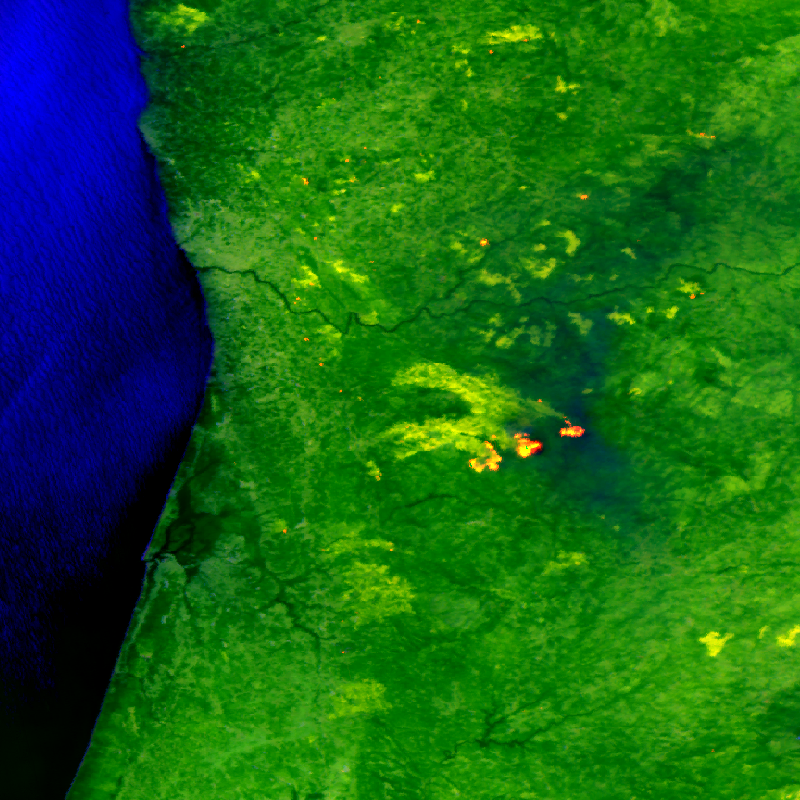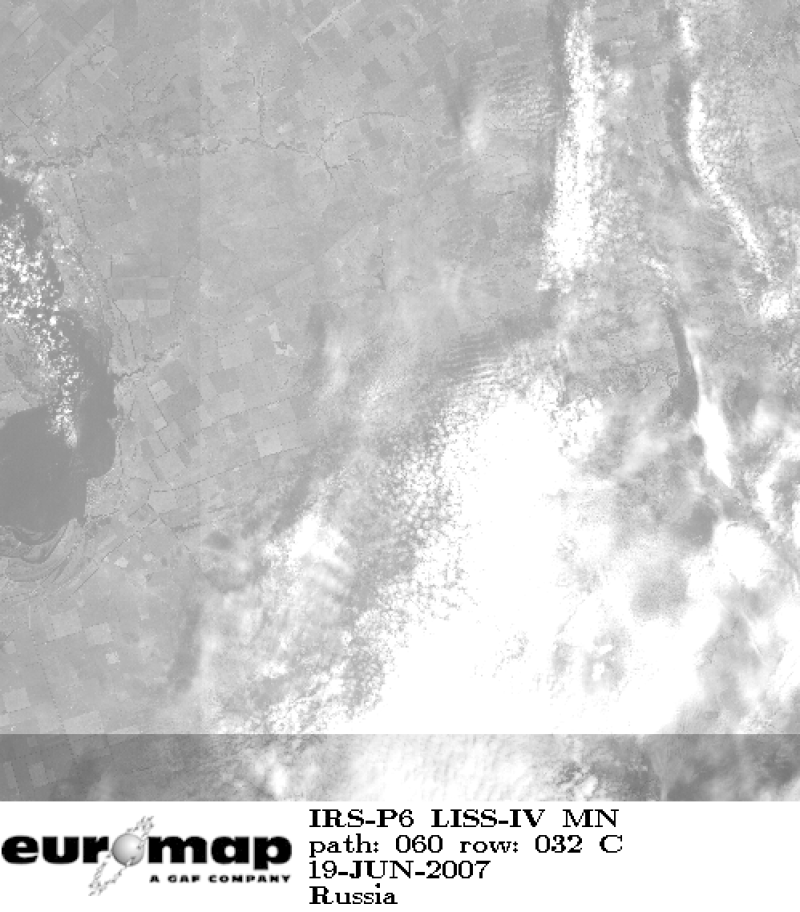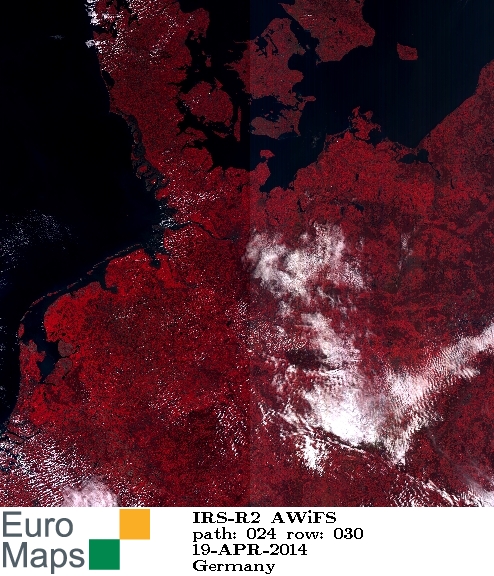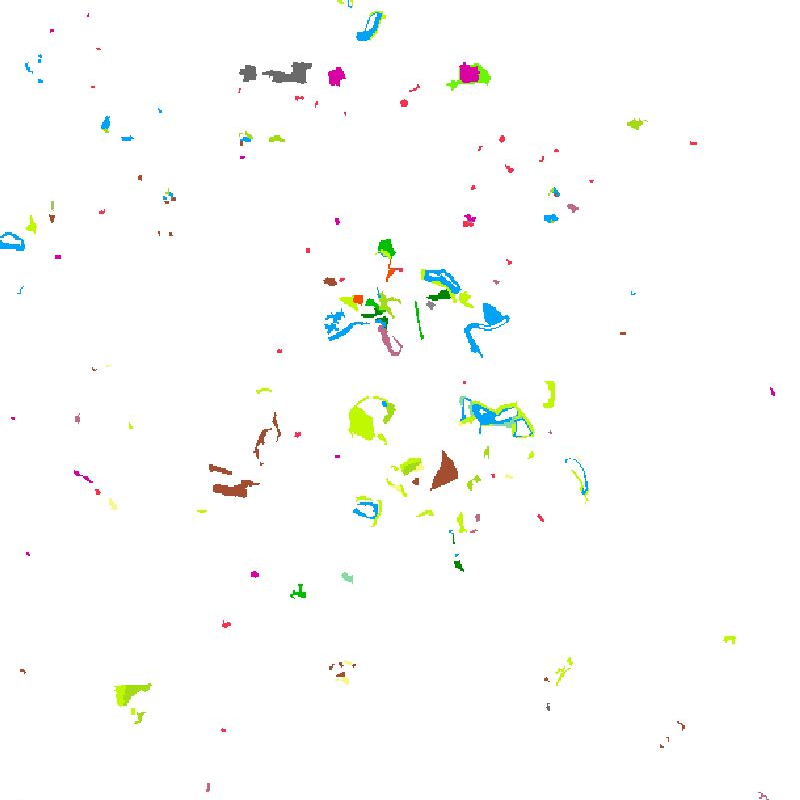Topic
imageryBaseMapsEarthCover
68858 record(s)
Provided by
Type of resources
Available actions
Topics
Keywords
Contact for the resource
Update frequencies
-

-

The FireBIRD mission consists of two small satellites, TET-1 and BIROS. Together, the two satellites are on an Earth observation mission that aims to detect forest fires, or high-temperature events, from space. The new infrared system provides high-quality data that is capable of measuring the spread of the fire and the amount of heat generated with great accuracy very early on - almost in real time - meaning that FireBIRD can serve as an early warning system. The data acquired from this Earth observation mission can also be used as a basis for scientific climate research. In addition to the main payload of the cameras, further experiments have been planned for developing the technology on board the small satellites. Further information can be found on the following website: http://www.dlr.de/firebird/en/ and in the FireBIRD brochure available at: http://www.dlr.de/firebird/en/Portaldata/79/Resources/dokumente/FireBIRD_Broschuere_HighRes_v3_english.pdf
-

Indian Remote Sensing satellites (IRS) are a series of Earth Observation satellites, built, launched and maintained by Indian Space Research Organisation. The IRS series provides many remote sensing services to India and international ground stations. With 5 m resolution and products covering areas up to 70 km x 70 km IRS LISS-IV mono data provide a cost effective solution for mapping tasks up to 1:25'000 scale.
-

The hyperspectral instrument DESIS (DLR Earth Sensing Imaging Spectrometer) is one of four possible payloads of MUSES (Multi-User System for Earth Sensing), which is mounted on the International Space Station (ISS). DLR developed and delivered a Visual/Near-Infrared Imaging Spectrometer to Teledyne Brown Engineering, which was responsible for integrating the instrument. Teledyne Brown designed and constructed, integrated and tested the platform before delivered to NASA. Teledyne Brown collaborates with DLR in several areas, including basic and applied research for use of data. DESIS is operated in the wavelength range from visible through the near infrared and enables precise data acquisition from Earth's surface for applications including fire-detection, change detection, maritime domain awareness, and atmospheric research. Three product types can be ordered, which are Level 1B (systematic and radiometric corrected), Level 1C (geometrically corrected) and Level 2A (atmospherically corrected). The spatial resolution is about 30m on ground. DESIS is sensitive between 400nm and 1000nm with a spectral resolution of about 3.3nm. DESIS data are delivered in tiles of about 30x30km. For more information concerning DESIS the reader is referred to https://www.dlr.de/de/eoc/forschung-transfer/projekte-und-missionen/desis
-
Digitale Orthophotos flächendeckend für das Gebiet der Stadt Hamm, in belaubtem Zustand, im Blattschnitt der DGK
-

Indian Remote Sensing satellites (IRS) are a series of Earth Observation satellites, built, launched and maintained by Indian Space Research Organisation. The IRS series provides many remote sensing services to India and international ground stations. The revisit capability of only 5 days and the products coverage size of 370 km x 370 km make AWiFS products a valuable source for application fields such forestry and environmental monitoring
-

This dataset provides monthly maximum Land Surface Temperature (LST) values over Europe, derived from 1-km AVHRR observations. The data is generated by DLR and provided in the framework of the TIMELINE project. LST values are retrieved using physically-based split- and mono-window algorithms and corrected for atmospheric influences and surface emissivity. Only cloud-free observations with sensor view angles below 50 degrees are used. Due to reliance on infrared observations, data may be limited under persistent cloud cover. To ensure temporal consistency across sensors and overpass times, an orbit drift correction method was applied. This method harmonizes LST values to a fixed reference time of 13:00 local solar time, approximating the daily maximum temperature. The dataset is gridded in a 1-km LAEA ETRS89 projection. The product is provided in four tiles, covering the extent of the European Environmental Agency (EEA) reference grid, which includes the area from 900 000 m East and 900 000m North to 7 400 000m East and 5 500 000m North. The TIMELINE (TIMe Series Processing of Medium Resolution Earth Observation Data assessing Long-Term Dynamics In our Natural Environment) project, led by the German Remote Sensing Data Center (DFD) of the German Aerospace Center (DLR), focuses on generating a consistent, multi-decadal time series derived from NOAA and Metop AVHRR data. Spanning more than 40 years from the early 1980s to the present this dataset covers Europe and North Africa. TIMELINE establishes an operational environment for the systematic reprocessing of AVHRR raw data into Level 1b, Level 2, and Level 3 geoinformation products at 1.1 km spatial resolution. These products maintain uniform standards in format, projection, and spatial coverage. The dataset includes a comprehensive suite of land and atmospheric parameters such as atmospherically corrected surface reflectance, NDVI, snow cover, fire hotspots, burnt area, land and sea surface temperatures, and various cloud physical properties (e.g., cloud top temperature). By combining traditional and innovative remote sensing products with robust processing algorithms and state-of-the-art validation techniques, TIMELINE provides a unique, high-quality dataset for global change research.
-
Digitale Orthophotos (Luftbilder) 2014 für das gesamte Stadtgebiet in unbelaubtem Zustand, im Blattschnitt 500 * 500 m
-

The objective of the pan-European project CORINE Land Cover (CLC) is the provision of a unique and comparable data set of land cover for Europe and the delivery of regular updates to register also the land cover and land use changes over time. It is part of the European Union programme CORINE (Coordination of Information on the Environment). The mapping of the land cover and land use was performed on the basis of satellite remote sensing images. The first CLC data base CLC1990, which was finalized in the 1990s, consistently provided land use information comprising 44 classes, out of which 37 classes are relevant in Germany. The first two updates for Europe were based on the reference years 2000 and 2006. For Germany, DLR-DFD was responsible for the creation of CLC2000 and CLC2006 on behalf of the Federal Environment Agency. In addition to the updated land cover, change datasets were also parts of the project. For deriving a meaningful CLC2000 change product, it became necessary to re-interprete parts of the satellite data of 1990 and to create a revised product, called CLC1990 (rev). Further details: https://www.dlr.de/en/eoc/research-transfer/projects-missions/corine-land-cover
-

The World Settlement Footprint (WSF) 3D provides detailed quantification of the average height, total volume, total area and the fraction of buildings at 90 m resolution at a global scale. It is generated using a modified version of the World Settlement Footprint human settlements mask derived from Sentinel-1 and Sentinel-2 satellite imagery in combination with digital elevation data and radar imagery collected by the TanDEM-X mission. The framework includes three basic workflows: i) the estimation of the mean building height based on an analysis of height differences along potential building edges, ii) the determination of building fraction and total building area within each 90 m cell, and iii) the combination of the height information and building area in order to determine the average height and total built-up volume at 90 m gridding. In addition, global height information on skyscrapers and high-rise buildings provided by the Emporis database is integrated into the processing framework, to improve the WSF 3D Building Height and subsequently the Building Volume Layer. A comprehensive validation campaign has been performed to assess the accuracy of the dataset quantitatively by using VHR 3D building models from 19 globally distributed regions (~86,000 km2) as reference data. The WSF 3D standard layers are provided in the format of Lempel-Ziv-Welch (LZW)-compressed GeoTiff files, with each file - or image tile - covering an area of 1 x 1 ° geographical lat/lon at a geometric resolution of 2.8 arcsec (~ 90 m at the equator). Following the system established by the TDX-DEM mission, the latitude resolution is decreased in multiple steps when moving towards the poles to compensate for the reduced circumference of the Earth.
 www.geodatenkatalog.de (S3L)
www.geodatenkatalog.de (S3L)